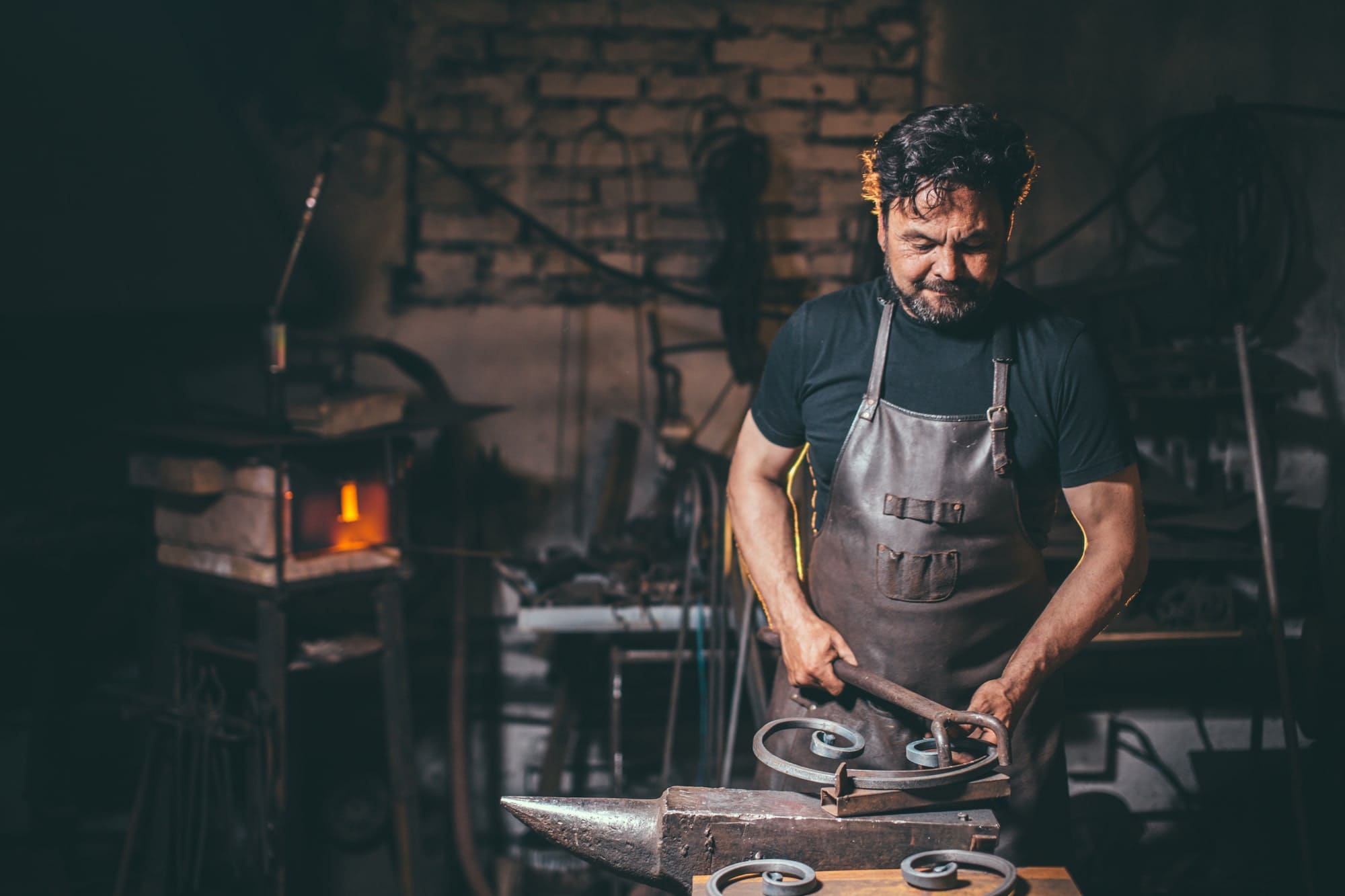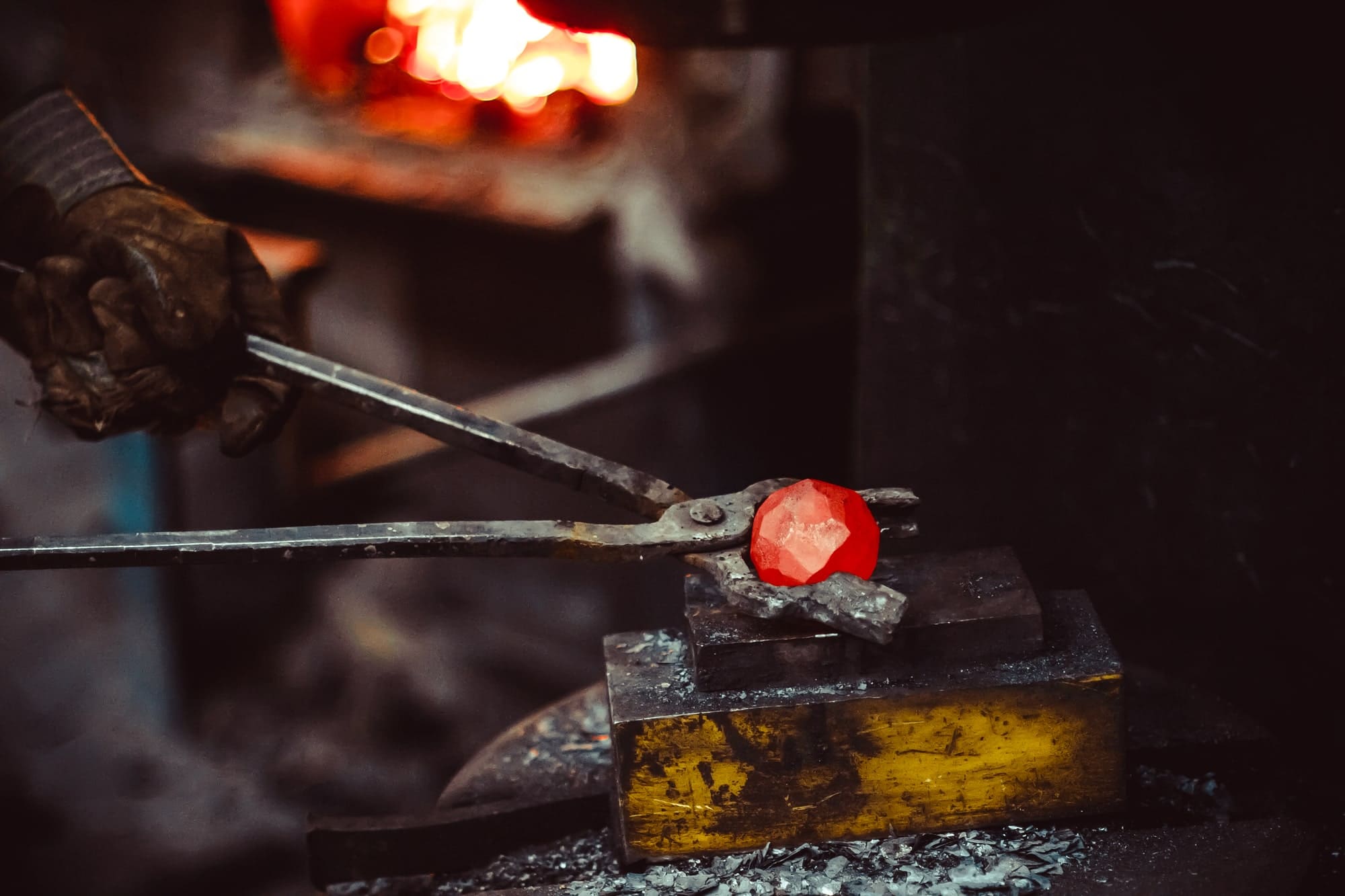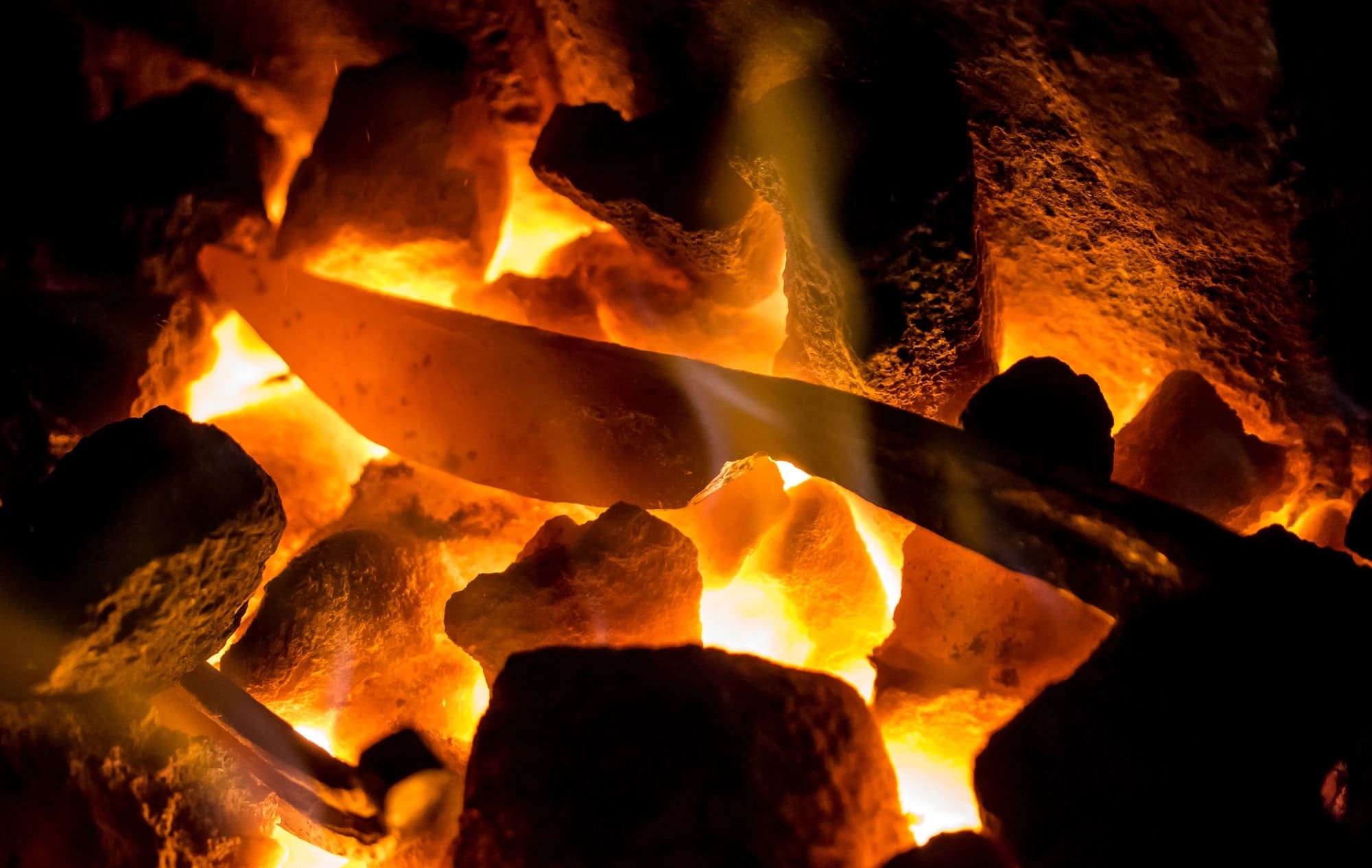After bronze appeared in the late fourth century BC, forged weapons became more durable and blacksmithing spread across vast territories, from India, China and Japan to the Mediterranean. Through centuries of practice, people gradually improved the technology of forging.
Following the invention of the first steam machine in the 19th century, smithcraft made a significant step forward. The development of high-powered steam and pneumatic hammers, followed by hammers with drive shafts, made it possible to produce forged goods for the railroad, automotive, agricultural and construction industries, as well as for military applications.
The invention of the open-hearth furnace and discovery of suitable natural resources played major roles in the development of the forging industry. Ample reserves of iron ore with high phosphorus and sulphur content were available to smelt into high-quality steel. This provided innovative equipment and reliable, affordable raw materials for the industry.
In the 20th century, the increased application of semiconducting electric induction heaters helped the industry to expand. The induction heating process made it possible to significantly improve both production capacity and the design tolerances of forged goods.
The industrial revolution and World War II had inevitable impacts on the development of the forging industry. As press-forging equipment improved, so did the forging process. The need for enormous quantities of weapons also contributed substantially to the evolution of the industry.

Today, the world is changing continuously and never stands still. Modern smithcraft features computer-controlled hydraulic and pneumatic hammers. Reliable precision equipment serves many purposes, and products made from forged steel are widely used in the aerospace, automotive, mining, agricultural, energy and other industries.
In the modern world, smithcraft is increasingly becoming an art form. Jewellery is crafted from precious metals and decorative objects are forged for use in interior and exterior design. The art of metalsmithing creates beautiful things, some of which are truly works of art.
From history to technology
Smithcraft and metal forging technology are used to shape metal under the impact of specific forces. There are coldandhot forging processes, depending on the temperature at which the metal is worked. The weight of forged goods can vary from a few hundred grams to hundreds of tonnes. To forge steel, an induction heating system, forge furnace (hearth) and other heating equipment are required. Steel and iron ingots are generally hot forged. Products forged from steel at high temperatures are usually characterised by lower surface porosity, a fine-grained structure, high strength and durability. These are the best characteristics that can be achieved when working steel.
When steel is heated to forging temperature, it becomes highly malleable and can be shaped as needed. It is quite unusual to watch solid metal gradually transform into the shape of the product design. Almost all types of metal – ferrous and non-ferrous – can be forged. Steel with various chemical compositions can be used for forging, including carbon, alloyed, high-alloy and stainless steel.
The two primary forging methods are determined by the temperature at which the metal is worked.
Hot forging occurs when metal is heated to high temperatures prior to being worked in order to decrease its resistance to deformation. For steel (depending on alloy and carbon content), the temperature ranges from 800°C to 1,250°C. This is higher than the recrystallisation and phase transition temperatures, which makes it easy to shape the alloy. For aluminium alloys, the hot forging temperature is substantially lower: 420-500°С. Hot forging makes it possible to make products with complex shapes, as well as heavy or bulky goods.

Cold forging is performed without high-heat treatment at temperatures below 150°C. This reduces malleability and requires significant amounts of force, which in turn substantially limits the applicability of the technology.
Depending on whether die blocks are used, metal forging processes can be further delineated into die-less forging (free manual or machine forging) and die forging.
The difference is that when free machine forging is used, the metal part is worked using special forging machines, hammers and hydraulic presses. Deformation occurs through the turning process until the product acquires the necessary shape.
When a product requires a specific complex shape, the closed die forging method is used, in which the metal is clamped between two die blocks that form a cut-out of the desired shape. Free forging is primarily used to produce single parts and small batches, while companies generally use die forging more frequently to produce large lots of generic goods.
Forged steel differs from steel made using other methods, such as casting. It is remarkably strong, incredibly durable and reliable, with a uniform composition and structure. However, there are limits to the size and thickness of steel that can be forged, since shaping metal is quite difficult work.
Today, forged products are among the best and most popular types of metal goods in the world. The superior properties of forged steel make it ideal for creating structures capable of withstanding massive loads. The modern automotive, shipbuilding, mechanical engineering and oil and gas industries also rely on forged products for a wide variety of applications. The aerospace industry even uses forged steel, launching modern spacecraft containing forged parts into space. Forging remains a major global industry today that contributes to the advancement of humanity.
Unravelling an ancient mystery
Oddly, while forged steel possesses superior characteristics and forged swords were prized for their sharpness, flexibility and durability, archaeologists have found many shattered or broken Viking swords. This is despite the Vikings’ claims that it was impossible to break their swords.

In a museum in Berlin, there is a broken sword on display with the name Ulfberht inscribed on its blade. This is a makers’ mark frequently encountered on swords of the 9th to 11th centuries. During their raids, the Vikings often travelled up the Rhine River to buy swords from German blacksmiths. Ulfberht was one such blacksmith shop. Swords with this makers mark were considered to be of superior quality, not unlike the Chanel brand in the modern fashion world. Ulfberht swords were known for their unique piercing force, unbreakable steel and durability. Even today, there are shops that specialise in making modern reproductions of ancient Ulfberht weapons.
To create a sword today using the methods of this ancient German blacksmith shop, it is important to use both soft and hard types of steel. The production process requires laborious hammering to combine the metals, as well as heating in a fire to obtain the correct molecular composition. This is a complex process, and certainly nobody would have been immune from minor defects. But the technology ensured that the steel contained the necessary amount of carbon, which resulted in a sharp and durable blade.
The mystery, then, is why the museum piece was not of such quality. Alas, not all weapon merchants in the 11th century proved to be reliable. Some of them placed the Ulfberht makers mark on swords forged by other blacksmiths who did not always use the correct technology, which adversely affected quality. To ensure that their merchandise would sell, they could easily inscribe a fake Ulfberht makers mark on such swords. This could make a poor-quality counterfeit look just like a sword forged at the legendary blacksmith shop.
An attractive price and famous makers mark could have been enough to convince an unsuspecting Viking to buy a sword that only vaguely resembled one from Ulfberht in terms of quality. When striking the first blow on an opponent’s steel armour, the Viking would find out how good the sword was. Essentially, the mystery of the broken sword has more to do with human nature than steel quality.
Throughout the course of history, reliable forging has been highly sought after in various fields: from agriculture, weaponry, jewellery production and artistic metalwork to the powerful modern mechanical engineering and aerospace industries. Despite its venerable age, smithcraft is moving ahead and evolving with confidence. By applying new technologies, it can sometimes seem irreplaceable for the further development of our civilisation.
